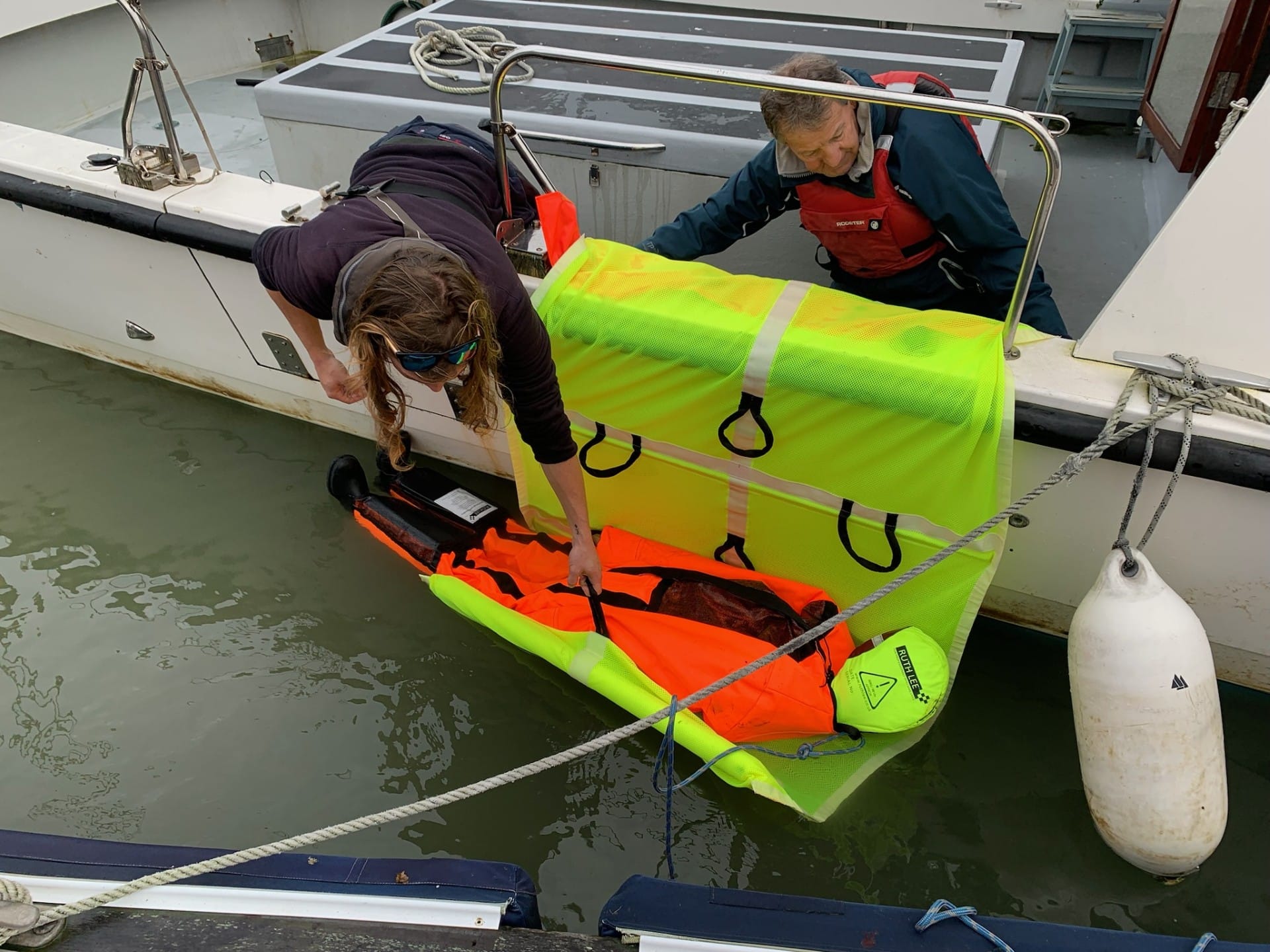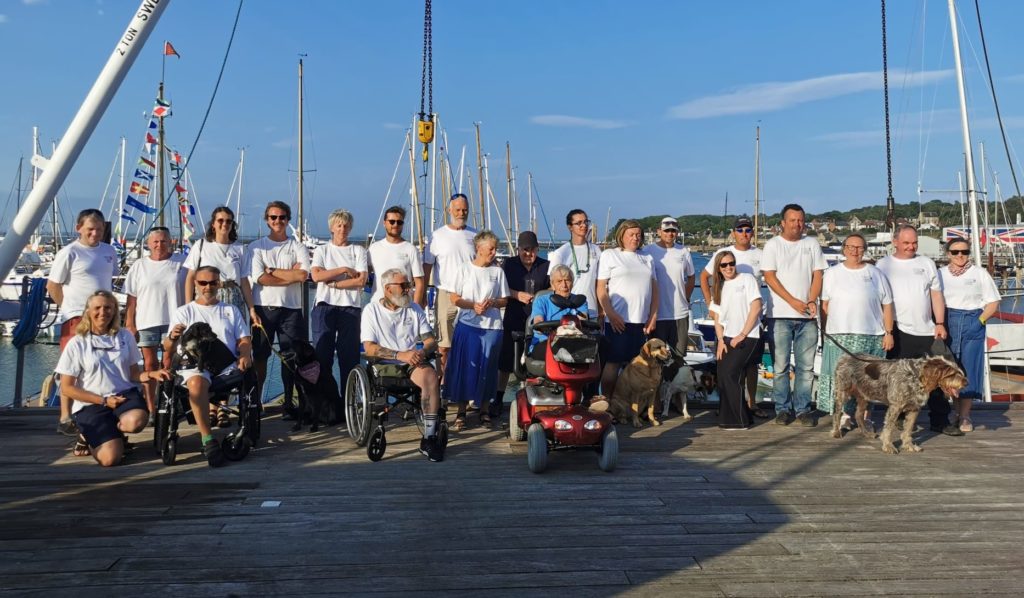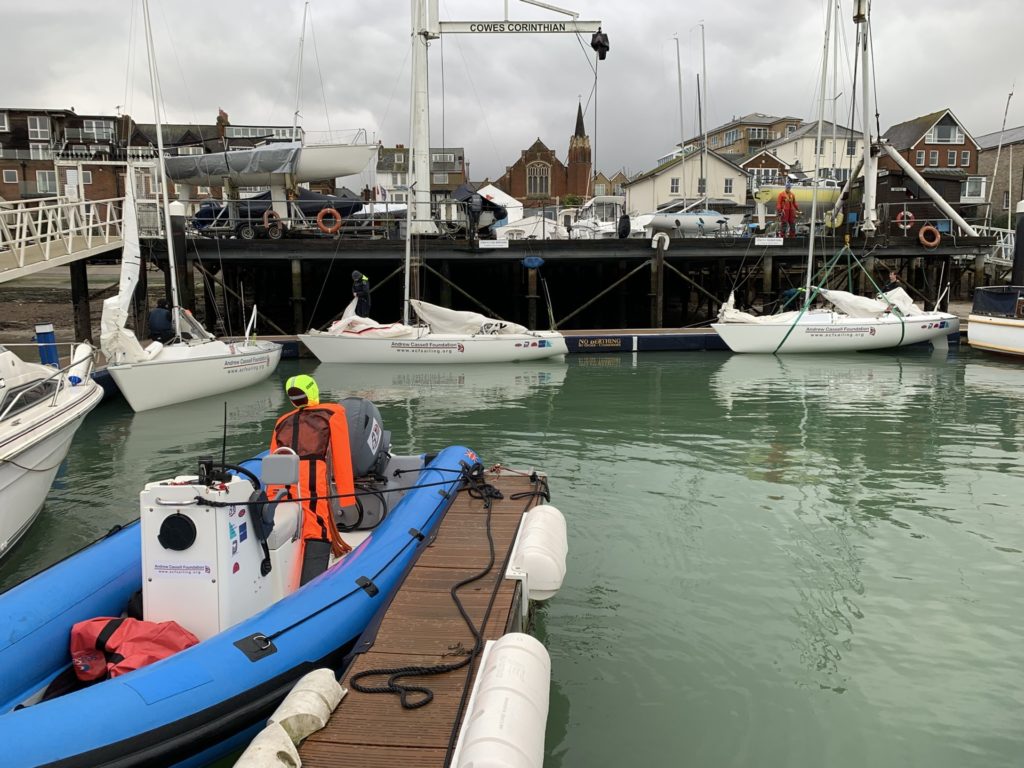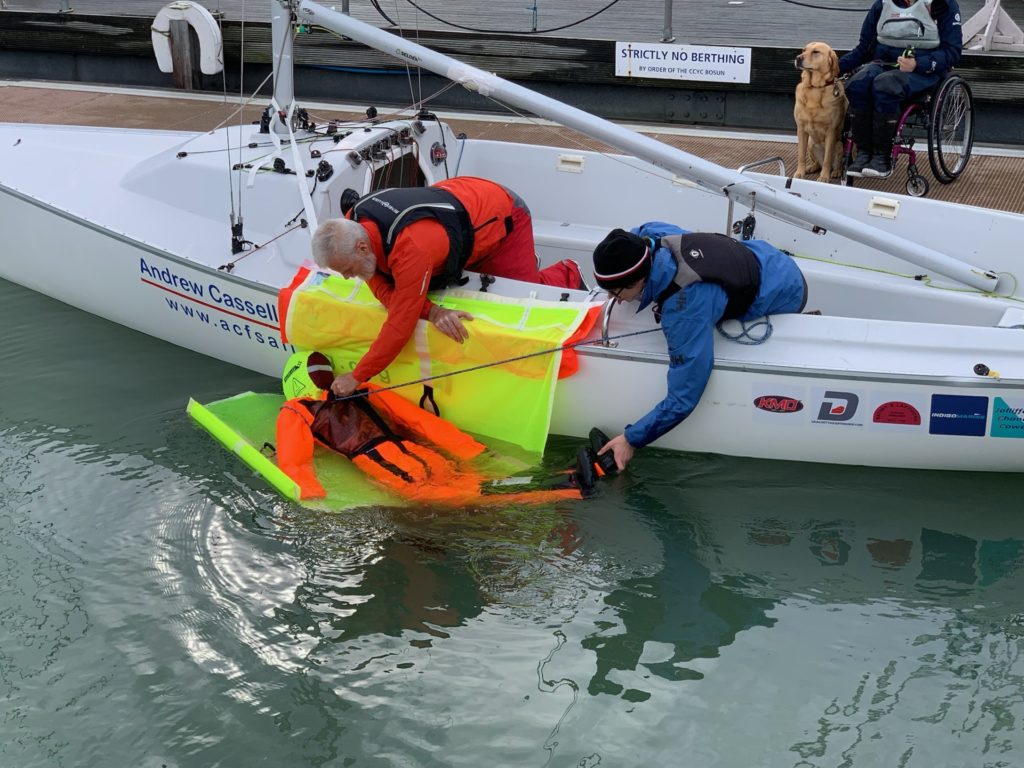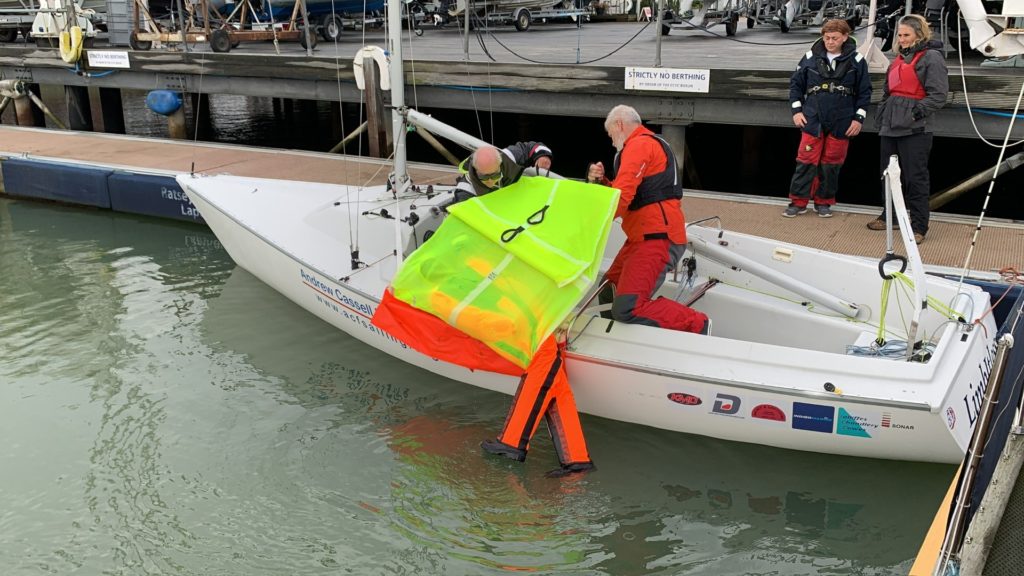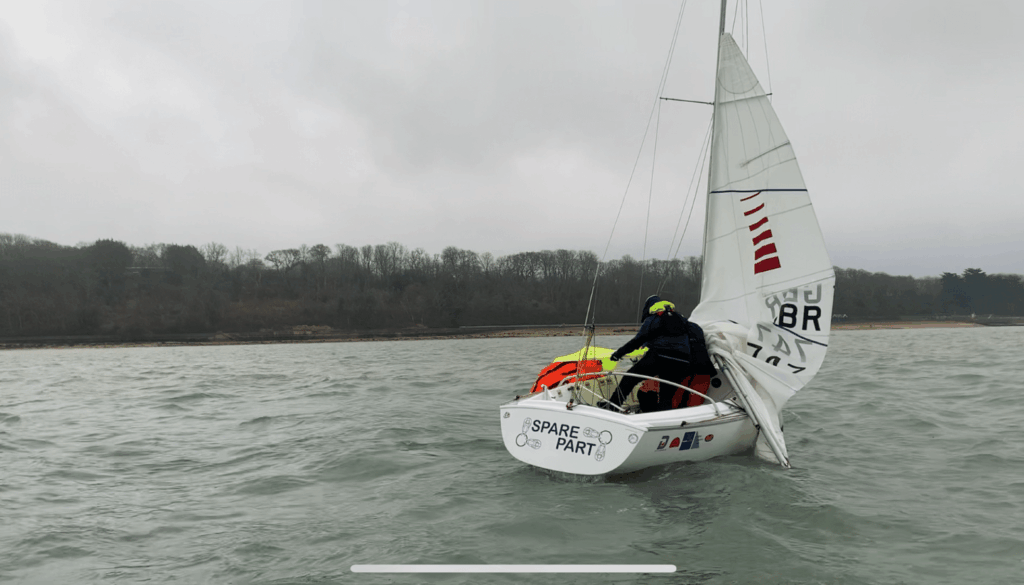A devastating loss within the sailing community became the catalyst for a major shift in training at the Andrew Cassell Foundation (ACF Sailing) – a pioneering organisation that empowers disabled sailors to compete on equal footing. When a routine manoeuvre turned tragic, it exposed a critical flaw in traditional man overboard (MOB) training, sparking an urgent need for change. Now, ACF Sailing is leading the way in redefining safety at sea, equipping sailors with the skills to save lives using cutting-edge training methods that are both brutally realistic and deeply effective.
Empowering Disabled Sailors to Compete and Stay Safe
ACF Sailing enables individuals with physical disabilities and impairments to race competitively in sailing, competing on an equal playing field with able-bodied sailors. The foundation provides an inclusive and supportive environment across all classes of keelboat racing.
Operating with crews of two to five people, ACF Sailing ensures that each participant takes a full role in sailing, allowing them to step beyond their condition and work as part of a team. The foundation’s approach is highly individualised, ranging from introducing newcomers to sailing, facilitating relaxed recreational sessions, and coaching at national and international levels. For those who wish to progress further, ACF Sailing offers long-term development pathways into mainstream keelboat and yacht racing.
The need for improved safety measures became evident after a tragic accident involving a sailor named Elizabeth. During a routine training session, she fell overboard, and despite the crew’s best efforts to retrieve her, they struggled to bring her back onto the boat quickly. This heartbreaking experience highlighted a critical flaw: retrieving a casualty alongside the vessel is not enough. Small keelboats must have their own capability to recover a person onboard rapidly and independently, as external rescue services can take precious minutes to arrive.
Since Elizabeth’s accident, ACF Sailing has identified multiple other unreported MOB incidents involving small keelboats, leisure fishing vessels, and other watercraft in the Solent area alone. The foundation actively encourages sailors to report near misses to organisations such as the Marine Accident Investigation Branch (MAIB) to improve safety across the sport.
Additionally, ACF Sailing found that private individuals and recreational sailors rarely practice the physical element of MOB recovery, relying instead on outdated or theoretical techniques. In response, they broke MOB training into two key sections:
- Sailing Skills – Training teams to react quickly, return to the casualty, and call for help.
- Physical Recovery – Practicing the retrieval of an unconscious or unresponsive person from the water.
The Search for a Better Training Method
Prior to using Ruth Lee training manikins, ACF Sailing relied on the traditional ‘bucket and fender’ method for MOB drills. This technique involves throwing a fender (buoy) attached to a bucket overboard to simulate a person in the water.
While this method remains useful for practicing sailing manoeuvres, it does not prepare crews for the physical challenge of lifting an actual casualty back onto the boat. Previously, full MOB training was conducted only four times a year; now, thanks to the addition of a realistic training manikin, sessions run every month with all participants getting hands-on experience.
How ACF Sailing Found Ruth Lee Manikins
Matt Grier, ACF Sailing’s Director and Lead Coach, has been a sailing instructor and racing coach since 1999, working at the highest levels of the sport, including overseeing Paralympic Sailing development from 2007 to 2017.
Matt first learned about Ruth Lee training manikins through a loan from the RNLI in Cowes. After extensive research and discussions with key safety experts – including John Barnes, a former RNLI R&D team member – ACF Sailing confirmed that using a realistically weighted Man Overboard (MOB) manikin would provide a far more effective and unforgivingly accurate MOB training experience.
“To really understand how hard it is to recover a person from the water, we needed something that behaved like an unconscious casualty,” Matt explains. “A real person will instinctively help in their own recovery, but a manikin gives you the real, raw challenge—no assistance, just dead weight.”
To verify its effectiveness, ACF Sailing conducted a controlled test, comparing the recovery of a real person versus the Ruth Lee manikin. The results debunked scepticism that using a live participant was more effective. Unlike a conscious person who instinctively stiffens their body to aid recovery, the manikin realistically mimicked an unconscious casualty, making the challenge far more demanding and realistic.
The community in Cowes rallied behind the foundation, funding the purchase of a MOB manikin as a shared asset for local training.
Transforming MOB Training with Ruth Lee Manikins
The introduction of Ruth Lee manikins has been a game-changer for ACF Sailing. The realism of training has increased dramatically, driving home the challenges of MOB recovery and fostering critical discussions about safety. Common reactions from trainees include initial shock at the weight of the manikin, followed by a newfound appreciation for the importance of preparation and technique.
Furthermore, ACF Sailing has incorporated the manikin into their volunteer assessments. All volunteers must now demonstrate that they can lift the manikin solo or work as part of a team to recover it efficiently. This ensures that those assisting disabled sailors have the necessary strength and skills to support safety at sea.
“We’ve seen a complete shift in mindset,” says Matt. “People realise very quickly that MOB recovery is not just about getting back to the casualty; it’s about what happens next. You need a plan, teamwork, and the right techniques to get them back onboard safely.”
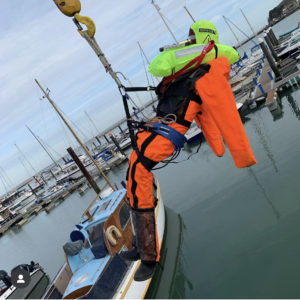
Typical Training Scenario
MOB training at ACF Sailing now follows a structured, two-part approach:
- Marina-Based Training:
- Conducted in a controlled environment to familiarise trainees with the recovery net.
- Ensures that everyone understands the correct techniques before facing real-world conditions.
- Allows participants to discover their own physical limitations and adjust teamwork strategies accordingly.
- Open Water Drills:
- Phase 1: Sailing Preparation – Crews begin with bucket and fender drills to refine their reaction times and recovery manoeuvres.
- Phase 2: Realistic MOB Recovery – A Ruth Lee manikin is deployed from a moving RIB as crews sail past, forcing them to react immediately to a simulated emergency.
- Key learning points include:
- Avoiding the instinct to skip straight to recovery without following proper procedures.
- Managing panic and maintaining a structured approach.
- Understanding the physical strain of lifting a real-weight casualty and planning for team fatigue.
Supporting the Community
Beyond their own training, ACF Sailing is deeply committed to improving safety for the wider sailing community. The foundation actively loans out its Ruth Lee manikin to other local sailing organisations, allowing more people to gain hands-on MOB recovery experience.
“We want to make this training as accessible as possible,” says Matt. “If another club or training centre wants to borrow the manikin, we’re happy to help. The more people who practice realistic MOB recovery, the safer our waters will be.”
Looking ahead, ACF Sailing is planning future fundraising efforts to purchase additional manikins, ensuring that more sailors can benefit from this invaluable training tool.
“We’re working towards making this type of training the norm, not the exception,” Matt adds. “It’s about creating a culture where safety isn’t just a box to tick – it’s a fundamental part of being out on the water.”
Key Lessons and Conclusion
Since incorporating Ruth Lee manikins, ACF Sailing has noticed significant improvements in their teams’ response capabilities:
- More frequent and serious training – MOB training is now a monthly exercise rather than a rare event.
- Improved crew response and coordination – Training highlights the importance of a structured approach and minimises panic-driven errors.
- Greater awareness of the physical challenges – Crews now understand that MOB recovery requires not just skill, but also physical preparedness and teamwork.
- A heightened sense of responsibility – The training has fostered a mindset that rescue is the responsibility of everyone onboard, not just external emergency services.
For those looking to enhance their own safety training, ACF Sailing is available to offer expert guidance and support. To learn more or get involved, visit ACF Sailing’s website or finding them on social media Facebook, Instagram, X, Linkedin.
